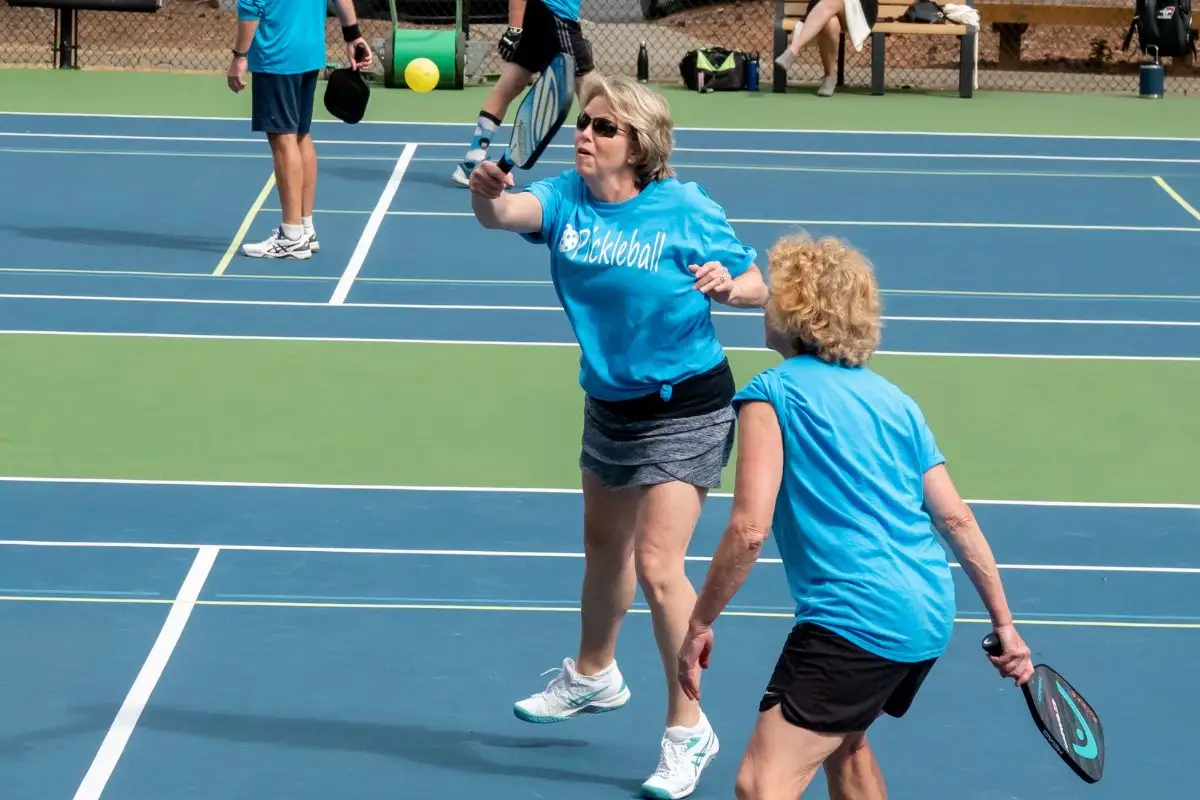Detective Skills for Pickleball Players: In pickleball, where players range from casual to serious competitors, understanding an opponent’s skill level before the match begins can significantly impact game strategy. Whether it’s a neighbor’s grandmother or a young tennis star, the court is a place of unpredictability. However, a keen eye can provide insights into who is truly ready for a challenge.
1. Pickleball Paddle and Shoes Check
- Paddle: One of the first indicators of an opponent’s experience is their pickleball paddle. A player wielding a paddle purchased from a department store likely lacks advanced skills. However, appearances can be deceiving; some pickleball players may invest in high-end equipment without the expertise to use it effectively. Conversely, seasoned pickleball players often rely on well-worn, scuffed paddles that reflect countless hours on the court.
- Shoes: The choice of footwear can also reveal much about a player’s background. Those sporting running shoes rather than proper pickleball court shoes are often newcomers to the sport, putting themselves at risk for injuries. Experienced pickleball players understand the importance of stability and support, opting for high-quality court shoes that enhance their performance.
2. Footwork in Pickleball
Footwork is a crucial element of pickleball. Observing an opponent’s movement can reveal their skill level. If a pickleball player glides effortlessly, positioning themselves for dinks and volleys, they are likely to be a formidable opponent.
Experienced players exhibit efficiency and purpose in their steps, making the game seem effortless. In contrast, if their footwork resembles an interpretive dance—lurching and lunging—they are likely still learning the ropes.
3. Warm-Up Before a Pickleball Match
Warm-up routines can serve as a glimpse into an opponent’s capabilities.
- Dinks: Players who focus on gentle, cautious dinks are typically under a 3.5 skill level. If they try to show spin but miss half of their shots, they likely hover around the 3.5 to 4.0 range. However, those delivering deliberate, strategic dinks in pickleball signal an advanced skill level, above 4.0.
- Drops and Drives: Players who integrate a mix of drops and drives during warm-up are likely at a 4.0 level or above. Interestingly, those who skip the warm-up altogether could either be inexperienced or seasoned players confident enough to perform well without it.
- Resets: Practicing resets at the net and transitioning smoothly between offensive and defensive strategies indicates a high-level pickleball player, potentially 4.5 or even 5.0.
4. Analysis of Player’s Movement
- Ready Position: A pickleball player’s stance can reveal much about their readiness and experience. An athletic position—knees bent, paddle up—signals a serious player, while a more relaxed posture suggests a beginner. Lower-level players often neglect to maintain a ready stance, while experienced athletes remain poised for action.
- Swing Mechanics: The quality of a player’s swing is equally telling. Higher-level players show smooth, controlled strokes, while lower-level players often struggle with inconsistent swings and uncontrolled energy, occasionally hitting the ball with excessive force.
5. Pickleball Equipment
- Clothing and Accessories: Protective eyewear often signals a player who has encountered the harsher realities of the game, while proper athletic wear and court shoes suggest familiarity and care for personal safety. If a player’s attire indicates a commitment to injury prevention, they likely possess some degree of experience.
- The Pickleball Walk: Advanced pickleball players carry themselves with confidence, chatting about gear and strategy, indicating familiarity with the game. In contrast, a newbie might appear lost, unsure of how to handle the court’s variations.
Lower-Level Players
Identifying less experienced players can be straightforward:
- Shot Selection: Lower-level players tend to aim for dramatic shots when simpler options are available, resulting in missed opportunities.
- Lack of Patience: The essence of pickleball lies in patience; inexperienced players often rush rallies, leading to unnecessary mistakes.
- Ready Position: Beginners may stand with their arms at their sides or fail to maintain position after serving, indicating a lack of understanding of gameplay.
- Unforced Errors: A classic hallmark of inexperience includes missing serves, poorly executed drops, and overreaching for balls.
News in Brief: Detective Skills for Pickleball Players
A comprehensive guide to assessing an opponent’s skill level in pickleball emphasizes the importance of observation before a match.
Key indicators include paddle quality, footwear choice, footwork, warm-up routines, and overall demeanor. By recognizing these signals, players can better prepare for their matches and adapt their pickleball strategies accordingly.
ALSO READ: Essential Recovery Tips for Pickleball Players, Boost Recovery and Return to the Court Ready


